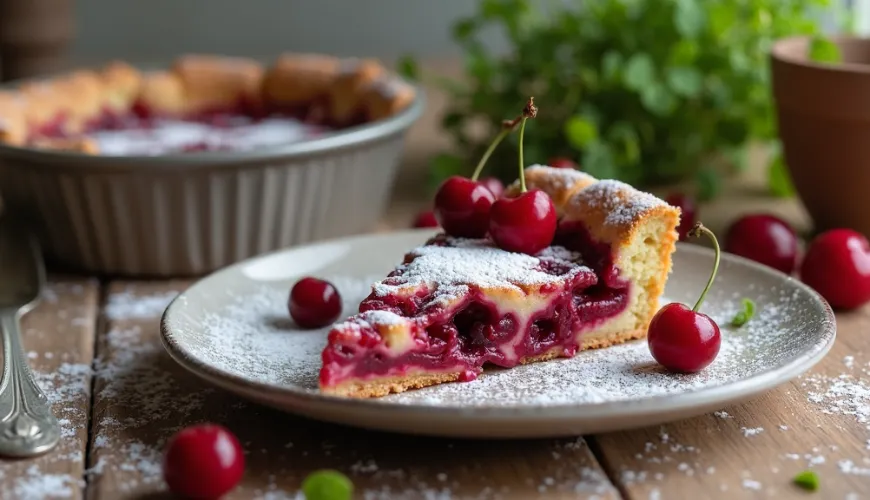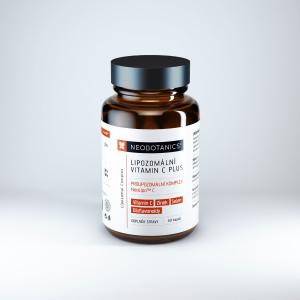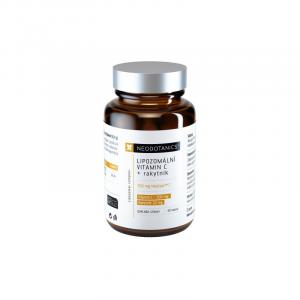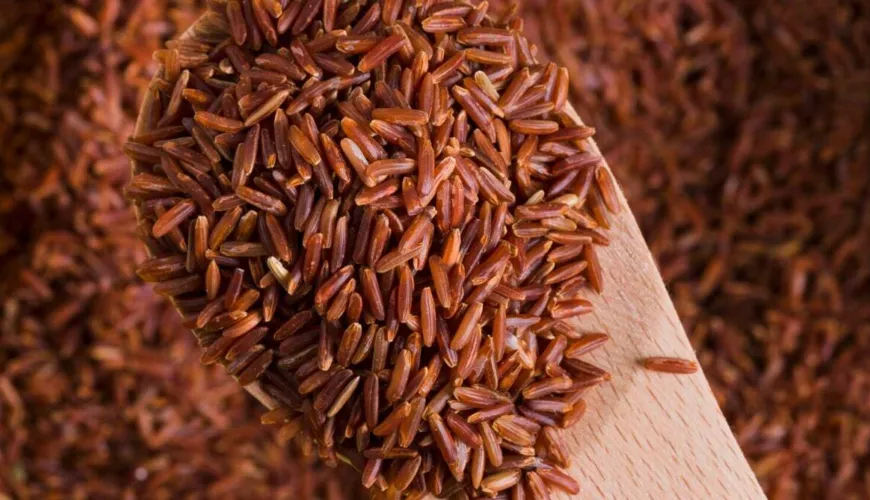
How to Make a Classic Cherry Clafoutis That Will Impress Everyone

Clafoutis – A French Dessert That Tastes Like Summer
When one mentions France, many think of cheese, wine, the Eiffel Tower, and of course, the delicate, delicious desserts. Among them, somewhat inconspicuously, is one that is to the French what a fruit cobbler might be to us – cherry clafoutis, a traditional sweet treat from the Limousin region. Although it is a simple dish, its taste and texture can surprise even the most demanding gourmets. And right now, during cherry season, is the best opportunity to prepare it.
What is clafoutis and why you should try it
Clafoutis [kla-fu-ti] is a baked dessert made from cherries covered in a thin batter similar to pancake batter, baked to a golden brown. The result is a soft cake with a creamy center and fruit that retains its juiciness. It is most commonly made with cherries, but there are also variations with apricots, plums, or blueberries – in such cases, however, it is no longer true clafoutis, but rather a "flaugnarde."
Interestingly, the French traditionally do not pit the cherries in clafoutis. Not only for authenticity but also because the pits impart a slight almond flavor to the dessert during baking. Nevertheless, it is common – and especially outside France – to prepare clafoutis with pitted cherries for easier consumption.
This dessert is exceptional precisely in the contrast between its simplicity and the resulting rich flavor. It's a bit like French elegance meets rustic coziness. And it's no coincidence that it often appears on tables during the fresh cherry season. Clafoutis tastes best when made with local, freshly picked fruit.
How to make traditional clafoutis?
Making this dessert is not complicated and can be done by anyone who has ever mixed batter for pancakes or cobbler. The recipe for cherry clafoutis requires only a few basic ingredients: milk, eggs, sugar, butter, plain flour, and of course, cherries. Some recipes also include vanilla or a drop of rum to add a pleasant aroma.
Here is an overview of the basic steps:
- Prepare the cherries – ideally fresh, but canned or frozen ones can be used if well-drained. Whether to pit them depends on personal preference.
- Whisk a smooth batter from eggs, milk, sugar, flour, and a pinch of salt. The consistency should resemble slightly runnier pancake batter.
- Grease a baking dish with butter, dust it with some sugar, and layer the bottom with cherries.
- Pour the batter over the cherries and bake in an oven preheated to 180°C for about 35–40 minutes. The surface should turn golden and the center should set.
- Serve ideally warm or at room temperature, dusted with powdered sugar. It pairs well with a dollop of cream or homemade vanilla ice cream.
Clafoutis is also excellent the next day, when the flavors have melded, but it rarely lasts – like a classic cobbler, it often disappears within hours.
Clafoutis and a healthy household – do they go together?
You might wonder – what does clafoutis have to do with an eco-friendly lifestyle? At first glance, nothing, but the choice of ingredients can make a big difference. By opting for local and seasonal fruit, we reduce our carbon footprint and support local growers. Cherries from your own garden or a farmer's market also taste entirely different from those imported from across Europe.
Similarly, it might be interesting to consider the origin of the eggs or milk. An organic farm, organic quality, free-range – these are all factors that don't just change our plate but also the world around us. And when you decide to bake with whole grain flour or replace part of the sugar with natural sweeteners, you can make clafoutis healthier without sacrificing authenticity.
Experiences from households show that clafoutis can also be made in a lactose-free version (with plant-based milk) or gluten-free (e.g., with rice flour). The taste may be slightly different, but the basic character and charm remain. And that's what makes it universally loved.
Clafoutis and its place in the family kitchen
In many French households, clafoutis is a favorite and frequent guest at the summer table. Children love it for its sweet and moist texture, while adults appreciate its simplicity and elegant impression. And above all – no special equipment or pastry chef skills are needed.
An example is a family from southern Bohemia who discovered clafoutis during a holiday in the French countryside. After returning home, they decided to try making it themselves, with cherries from their own garden. Since then, it has become part of their annual summer ritual. The children remember "that French thing with cherries," and the adults appreciate having a recipe that takes no more than an hour and brings joy to everyone.
Clafoutis is also easy to transport – an ideal choice for picnics, family celebrations, or visits with friends. It is one of those desserts that remain delicious even without complicated serving and still feel special.
Why cherries?
French cuisine has a deep affinity for fruit, and cherries are no exception. During June and July, they become the stars of markets and home gardens, and that is the best time to prepare clafoutis. Cherries are full of antioxidants, vitamin C, and even melatonin, which aids in quality sleep – making them not only tasty but also beneficial.
Try our natural products
Moreover, combined with butter and sweet batter, they create a flavor balance that is hard to replicate with other fruits. The tart notes of cherries contrast with the softness of the batter, giving clafoutis its unmistakable character. And that is why the classic cherry clafoutis holds a prominent place in this sweet tradition.
The French writer Marcel Pagnol once said: "Home is where the cake smells from the oven." And if that cake is called clafoutis, it would be the scent of summer, joy, and the French art of living. So why not bring a piece of that atmosphere into your own kitchen?
Whether you're a fan of traditional recipes or trying new things, the cherry clafoutis recipe will pleasantly surprise you. It only takes a few ingredients, seasonal fruit, and the desire to try something new – or perhaps something very old that still has much to offer.







